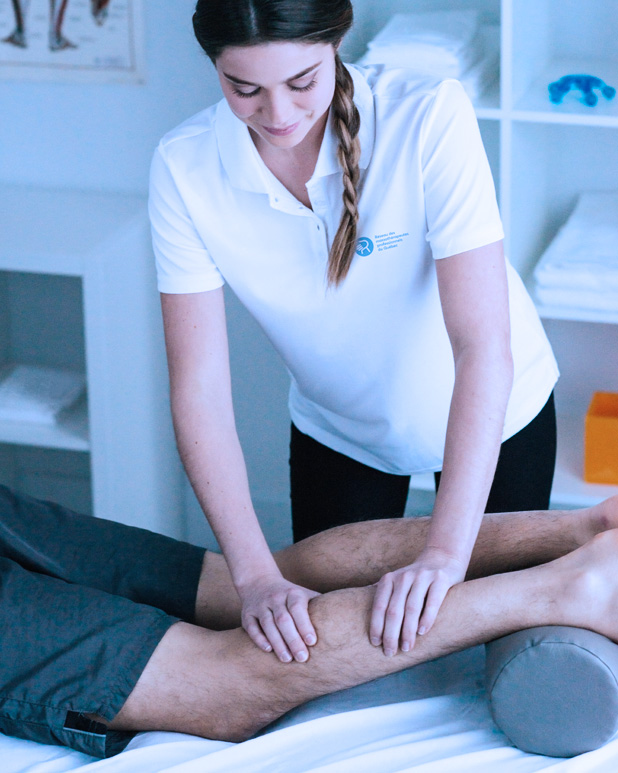Find a therapist
The Network of professional massage therapists of Quebec brings together more than 8,000 massage therapists
Member and insurer access
Find a therapist
The Network of professional massage therapists of Quebec brings together more than 8,000 massage therapists
Fasciatherapy is a manual therapy performed gently without manipulation on the fascia and with the objective of reactivating muscles, joints and organs that could be hindered.
Fascias are thin fibrous and malleable membranes that cover and envelop muscles, joints, bones, ligaments, arteries and internal organs. Together, they create a kind of web that supports and connects all these elements together. With tendons and ligaments, they are part of what is called connective tissue.
When healthy, fascias are relaxed, and the skin can slide on them smoothly. Sensitive to stress, bad postures, shocks and trauma, fascias can harden, contract, or even create “adhesions”, thus hindering freedom of movement and joints. These impediments can lead to pain, muscle spasms and tension, and subsequent muscle and joint discomfort, imbalance in body alignment, and poor lymphatic circulation.
Fascias are animated by a slow and very subtle movement. The therapist is trained to perceive this inner activity and feel under his fingers what the client feels in his body. By using delicate pressure, the therapist can free the structures and improve the fluidity and natural movements of fascias.
Fasciatherapy is a comprehensive approach developed in France and now well established in Quebec.

Fasciatherapy is used to help people with musculoskeletal disorders such as tendinitis, sciatic nerve problems or low back pain. Therapists also recommend this technique for rehabilitation as a result of trauma or to relieve circulatory disorders during pregnancy or after delivery.
At first, the therapist identifies in the body of the client the areas of tension or stillness of fascias. In order to release tension, he gently slips the tips of his fingers on the skin, with slow and precise gestures, without manipulation. He stops on a fulcrum (support point) for a moment, makes a very slight pull to “unfold” the fascia, and then moves to another area. The movements are almost imperceptible from the outside, but the receiver feels pleasant subtle sensations.
During a care, fasciatherapy can be combined with a massage technique.
Except for people with serious circulatory problems, there are no contraindications to fasciatherapy. People who have suffered trauma should wait for the healing of bones and tissue before consulting.
Find a therapist